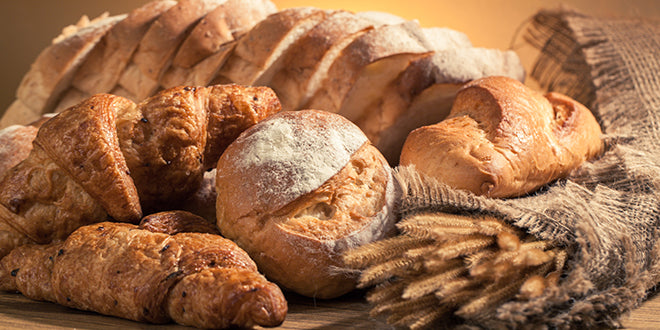Raw, steel cut oats for breakfast; a veggie burger on a bun for lunch; and a big salad with dinner rolls at supper.
If you don’t have celiac disease or a sensitivity to gluten, you may not see anything wrong with this picture. And maybe that’s the problem.
Hallelujah Diet or not, our food-frenzied culture is permeated with gluten.
As a Western culture on the whole, we’re simply eating more than we used to, including gluten-containing foods; some say with more gluten-containing foods comes a greater risk for increased gluten sensitivity.
Some even hypothesize that the world’s relatively recent obsession with anti-bacterial soap and hand sanitizer may be making our immune systems hypersensitive to common allergens (i.e. gluten).
The rise in gluten sensitivity may also be due to the fact that today’s grain is not what it used to be.
According to Dr. Alessio Fasano, medical director of the Center for Celiac Research at the University of Maryland School of Medicine, “The prevalence of celiac disease in this country is soaring partly because changes in agricultural practices have increased gluten levels in crops.”
In other words, after centuries of crossbreeding to create palate-pleasing tastes and textures, we have inadvertently created grains with gluten levels exponentially higher than those used to make bread back in Jesus’ day, for example.
All told, scientists aren’t exactly sure what’s causing an increase in gluten sensitivities — but there is definitely an increase!
In a study at the Mayo Clinic, blood samples from the 1950s (taken from Air Force soldiers) showed 400% fewer markers of celiac disease than blood samples from volunteers today. Currently, more than 1 in 133 people has celiac disease.
Could you be sensitive to gluten and not know it?
Most definitely, according to the Mayo Clinic study author Joseph Murray, M.D. who says, “Some studies have suggested that for every person who has been diagnosed with celiac disease, there are likely 30 who have it but are not diagnosed.”
Part of the problem with diagnosing celiac disease is that its symptoms can be mistaken for other, more common ailments such as irritable bowel syndrome.
Not to mention, since celiac disease is an autoimmune disease, it can trigger other autoimmune responses, like hypothyroidism, which is strongly correlated with celiac disease.
The many facets of celiac disease are complicated enough, but non-celiac gluten sensitivity (NCGS) is even more confusing — to the point that doctors have been treating it as a psychosomatic condition (much as fibromyalgia was once considered).
Adding to the confusion, recent studies are now suggesting that gluten may not be responsible for the sensitivities experienced by people with NCGS and that “all individuals, even those with a low degree risk, are therefore susceptible to some form of gluten reaction during their life span.”
You may find it surprising that celiac disease and NCGS are completely different in terms of how they affect the body.
Celiac disease is an autoimmune response that causes the body to attack its own small intestine; this action, in addition to triggering other autoimmune responses, can lead to as many as 55 other diseases.
NCGS, though it has similar symptoms to celiac disease, is not characterized by an autoimmune response.
So how do you tell the difference?
Celiac disease shows up on diagnostic blood tests. The small intestine will usually show signs of damage as well if celiac disease has persisted for some time. NCGS is somewhat more difficult to diagnose.
In fact, brand new research released in February 2012 maintains that, to this day, “no clear definition or diagnosis exists.”
Those affected with NCGS will have abdominal discomfort similar to celiac disease, in addition to mental fog, headaches, and tingling of the extremities.
Regardless of which condition is causing the problem, the body’s response creates inflammation, which can lead to a host of other problems. So, if you suspect you have any kind of issue with gluten it’s important to get a handle on the situation before it escalates.
15 Hidden Names for Gluten
Gluten is known by many other names on product labels. Watch out for:- Acacia
- Annatto coloring
- Bleached flour
- Brewer’s yeast
- Caramel coloring
- Cellulose gum
- Garlic salt
- Malt vinegar
- Malted barley flour
- Monosodium glutamate
- Natural flavors
- Onion salt
- Tomato paste
- Vegetable broth
- Unbleached flour








